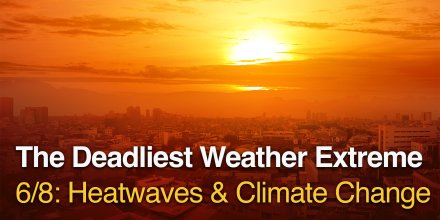
Webinar: Climate Data Tools for Resilient Urban Planning
This second webinar in the series presents digital tools that turn climate data into actionable strategies for urban resilience.

This second webinar in the series presents digital tools that turn climate data into actionable strategies for urban resilience.

Human activity drives a sharp rise in heatwaves, with some regions exceeding climate model projections.
|
|
|||||||||
|---|---|---|---|---|---|---|---|---|---|
|
Icon
|

|

|

|

|

|

|

|

|
|
|
Temperature (°F)
|
|||||||||
|
Temperature felt (°F)
|
44° |
41° |
44° |
49° |
53° |
55° |
51° |
43° |
|
|
Wind direction
|
NW |
WNW |
WNW |
NW |
NW |
NNW |
NNW |
S |
|
|
Wind speed (mph)
|
NW
9-18
9-18
|
WNW
9-19
9-19
|
WNW
11-20
11-20
|
NW
12-20
12-20
|
NW
11-18
11-18
|
NNW
8-14
8-14
|
NNW
3-6
3-6
|
S
3-5
3-5
|
|
|
Precipitation (in/3h)
|
< 0.04 in
25%
< 0.04
|
< 0.04 in
25%
< 0.04
|
< 0.04 in
25%
< 0.04
|
< 0.04 in
25%
< 0.04
|
< 0.04 in
25%
< 0.04
|
-
0%
-
|
-
0%
-
|
-
0%
-
|
|
|
Precipitation probability
|
25%
|
25%
|
25%
|
25%
|
25%
|
0%
|
0%
|
0%
|
|
|
Precipitation hourly
|
|||||||||
|
rainSPOT
Precipitation distribution within 20 km
|
|
On Thursday the weather is changing with a mix of clear and cloudy skies and a chance of showers. The sun will not be visible. There is only a low chance of Precipitation (around 30%). Temperatures as high as 61 °F are foreseen. On Thursday a gentle breeze is expected (8 to 12 mph). Winds blowing from Northwest. The weather forecast for Westlock for Thursday is likely to be accurate.
Pressure: 1012 hPa
Timezone: MDT (UTC -06:00h)
The location marker is placed on Westlock. This animation shows the precipitation radar for the selected time range, as well as a 1h forecast. Orange crosses indicate lightning. Data provided by nowcast.de (available in USA, Europe, Australia). Drizzle or light snow fall might be invisible for the radar. Precipitation intensity is colour coded, ranging from turquoise to red.
The real-time satellite image combines visible light during daytime with infrared radiation during nighttime. At night, the image is not dark as infrared radiation can detect temperature differences. Unfortunately, low clouds and fog are difficult to distinguish from ground temperatures and thus can be almost invisible during the night. Meteosat satellite images for Europe are updated in real-time every 5 minutes. GOES-16/GOES-17 (North & South America) and Himawari (Asia) images update every 10 minutes.
Precipitation is estimated from radar and satellites. Precipitation estimates from satellites are less accurate at night than during daytime.
© 2025 meteoblue, NOAA Satellites GOES-16 and EUMETSAT. Lightning data provided by nowcast.

This second webinar in the series presents digital tools that turn climate data into actionable strategies for urban resilience.

Human activity drives a sharp rise in heatwaves, with some regions exceeding climate model projections.
 Edmonton
Edmonton 
 St. Albert
St. Albert 
 Spruce Grove
Spruce Grove 
 Ft Saskatchewan
Ft Saskatchewan 
 Morinville
Morinville 
 Stony Plain
Stony Plain 
 Barrhead
Barrhead 
 Gibbons
Gibbons 
 Rideau Park
Rideau Park 
 Maple Ridge
Maple Ridge 
 Bon Accord
Bon Accord 
 Fort Assiniboine
Fort Assiniboine 
Advertising is essential to maintain our free website with unique detail and accuracy.
Please whitelist www.meteoblue.com on your ad blocker or consider buying one of our products:
Already have a subscription?
Then please login.